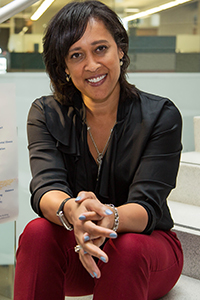
Wendy Ellis, MPH, DrPH, Milken Scholar Health Policy, Milken Institute School of Public Health Co-Principal Investigator & Project Director for Building Community Resilience Collaborative and Networks, Sumner Redstone Global Center for Prevention & Wellness at the George Washington University
This is a guest post by Wendy Ellis, who is presenting at the Hogg Foundation’s 2019 Robert Lee Sutherland Seminar: Working Together for Rural Well-Being. Read other posts in this series from Sheila Savannah, Frances Dunn Butterfoss, Oscar Benavides, and Nakia Winfield and Anna Jackson.
Across the country, parents and families in rural communities face the challenge of achieving or maintaining good health in the face of daunting adversity. Childhood adversity or trauma, such as abuse, neglect, or parental substance abuse and incarceration, oftentimes is rooted in community environments lacking equity as measured by access to jobs that pay a living wage resulting in concentrated poverty and poor housing conditions. These inequitable community conditions provide little access to supports or buffers that promote resilience.
What is community resilience?
The buffers and supports that promote community resilience include fair access to economic mobility including jobs that pay living wages, access to safe, stable and affordable housing, access to school-based healthcare centers with mental health services and social supports for children and families. When these elements are in place our children, and thus communities, have the best opportunity to thrive.
Building community resilience means that we are not only helping children and families ‘bounce back’ from adversity—we are actively addressing the sources of adversity to prevent trauma and put in place the supports so that communities can ‘bounce forward’ and thrive.
What is the Pair of ACEs?
The Building Community Resilience (BCR) networks and collaborative based at the George Washington University, views community resilience as an essential factor in improving public health and child health outcomes.
The BCR Pair of ACEs tree grew out of the need to illustrate the relationship between adversity within a family and adversity within a community. The leaves on the tree represent the symptoms of adverse childhood experiences (ACEs). The tree is planted in soil steeped in systemic inequities, robbing it of nutrients necessary to support a thriving community. Adverse community environments (ACEs), such as violence or lack of access to social and economic mobility, create a negative cycle of ever worsening outcomes.
The Pair of ACEs is not a winning hand for our communities. Creating healthier soil requires an all-sector response.
What can I do?
Through multi-sector partnerships BCR networks are working to create a Resilient Nation. Community partners across the country are using the BCR process to bring together diverse collaborations to address long-standing inequities and communicate the Pair of ACEs as a national public health concern.
In Texas, city leaders in Dallas are working across sectors and with community leaders to create more equitable access to economic mobility while providing access to families to prevent and treat childhood trauma. In Oregon, community members and leaders from education, child welfare and education are using the BCR process to address issues in their child welfare systems brought on by the opioid crisis. In Hamilton County, Ohio, where more than 50 percent of children of color live in poverty, a coalition of more than 50 organizations is using BCR and the Pair of ACEs framing to create strategic alliances aimed at making childhood adversity the exception and not the norm.
With a shared focus on data, community and public systems (such as education, child welfare, juvenile justice, substance abuse, mental health, and housing) you can influence practice, program and policy change at the local, state and federal level.
Related Resources
- Building Community Resilience, an initiative of The George Washington University’s School of Public Health
- The Pair of ACEs Tree
- Follow @ResilNation on Twitter
